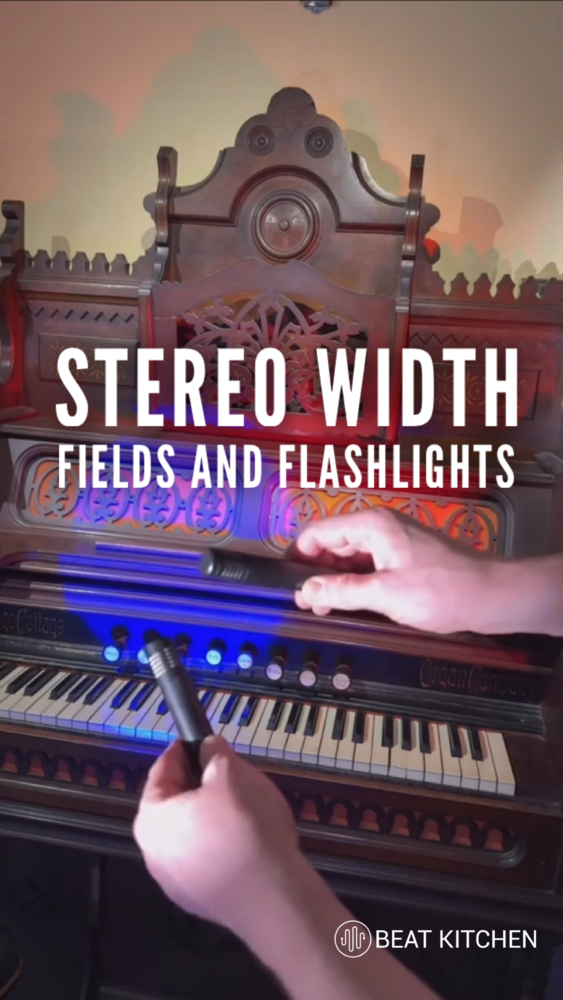Sometimes stereo is like an added byproduct of what you get when you use multiple microphones. But before we go into that, let’s shine a spotlight on a few common misconceptions. First of all, simply placing something on one side of the stereo field does not make a stereo recording.
Let’s start with the obvious. Stereo recording requires two microphones. And having two microphones doesn’t make a stereo recording either.
In fact, I’d argue that one of the most common methods for recording stereo acoustic guitar is ostensibly not really stereo. You’ll frequently see a microphone placed a few inches off the 12th fret paired with another a few inches off the lower body, panned left and right. It’s a reliable way to create width and excitement in the stereo field.
It also lacks the one thing I think defines the stereo technique, a phantom center image that seems to come from between the speakers rather than the sides. This is where I think things start to get really interesting. You can use stereo recordings to impart a sense of depth and space, which is why it’s particularly useful in things like rooms and reverbs.
But sometimes you need two microphones just to capture the scale and the detail of a large instrument. Imagine you’re trying to illuminate a football field with a flashlight. As you move backwards and gain scale, you lose brilliance.
And that’s when you decide to use two flashlights, which is not unlike what you may have to do to record an instrument with a lot of real estate like a piano. You can think of there being a kind of Venn diagram where the two things intersect. When panned left and right, one of a couple things is going to happen.
They’ll merge constructively, creating a phantom center image, or they’ll merge destructively. And that’s going to create some problems in a mono mix where there’s little or no overlap. Think back to our stereo-ish guitar.
It has the collateral benefit of a very wide stereo image that collapses beautifully to mono and a massive perk, a big hole in the middle. And that’s where you might put a focal point in your mix.

